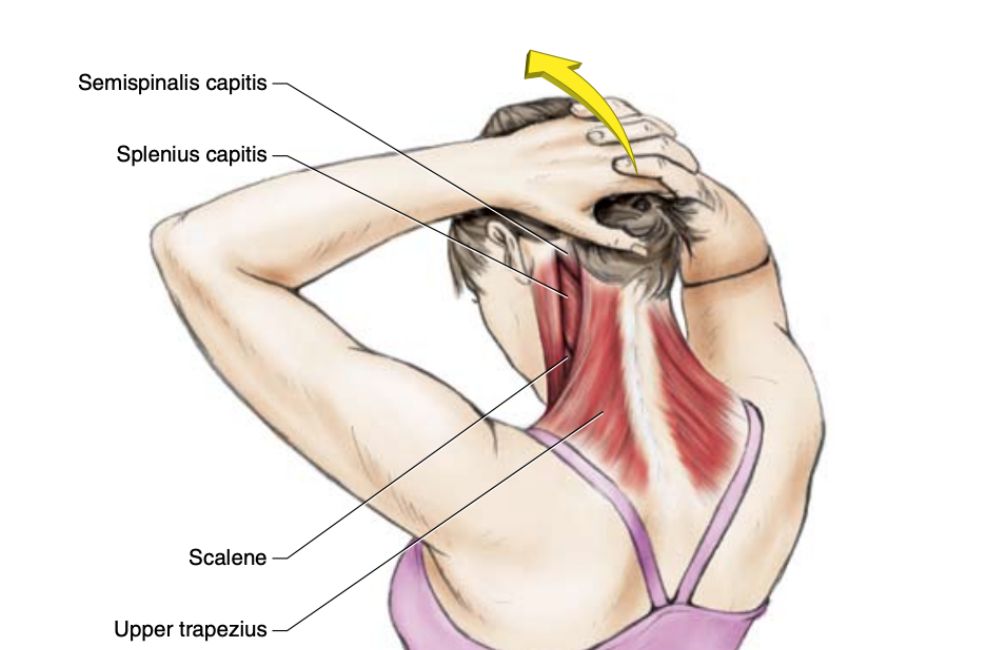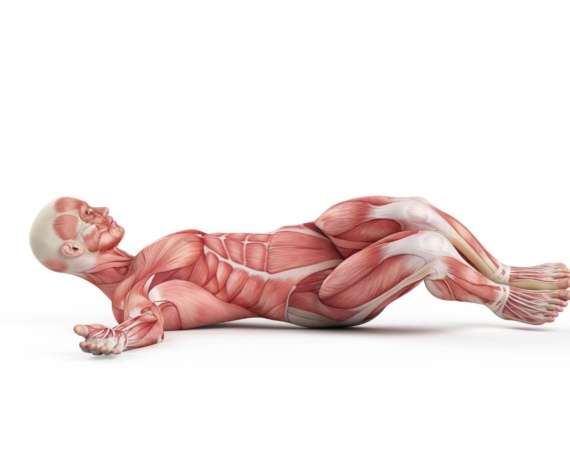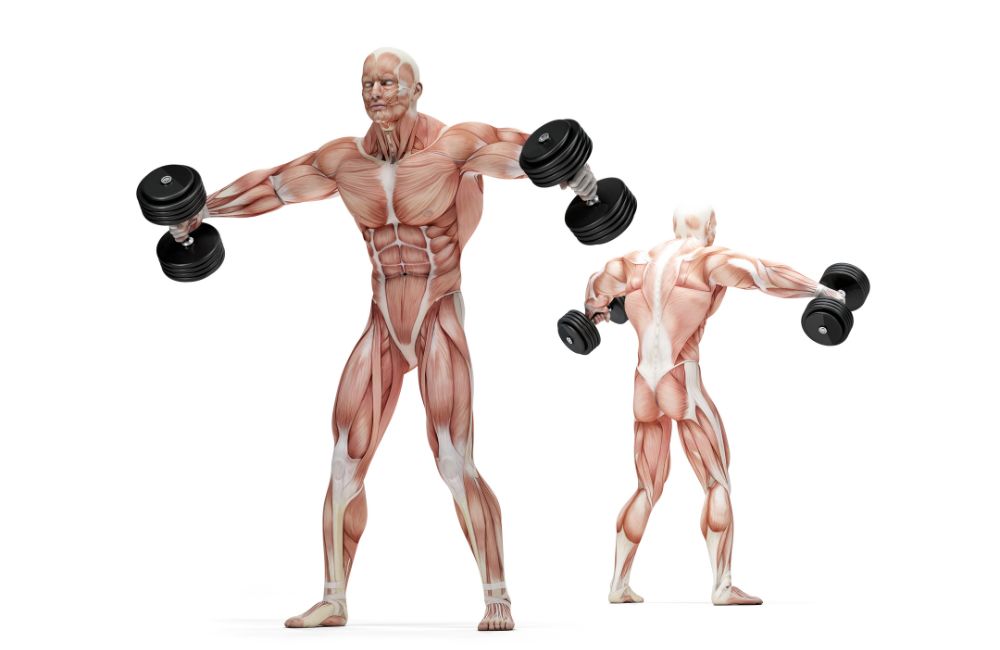
If you ask rehab professionals and personal trainers what their favorite joint is, they’ll often say “the shoulder”.
The shoulder is a fascinating joint from a biomechanics perspective. The mobility and stability inherent in this joint allow us to experience our environment in deep, rich ways.
But while the shoulder may be fascinating to us science nerds, it is also an appealing aesthetic area for many lifters.
In this article, I’ll provide a cursory overview of the shoulder, then outline 12 of my favorite exercises for building “boulder shoulders”.
The Shoulder 101
The “shoulder” can be thought of as a collection of various joints, muscles, and other key structures.
What most people think of when referencing the shoulder is the GH joint. GH stands for glenohumeral. This is where the “ball” portion of the humerus meets the “socket” portion of the shoulder blade.
Atop the GH joint are tons of different intricate muscles. Perhaps the most well-known group of muscles in the shoulder is the rotator cuff.
Within the rotator cuff are four different muscles which all lend stability and motion to the shoulder joint.
Another big muscle in this area is the deltoid. The deltoid is a tri-headed muscle that can sometimes look like a shoulder pad when it is developed enough.
There are other important joints in this body region, but for our purposes, we’ll focus primarily on the GH joint and the surrounding muscles. As we go through the exercise list, I’ll reference a few other muscles that are integral to shoulder health and function.
12 Best Shoulder Exercises
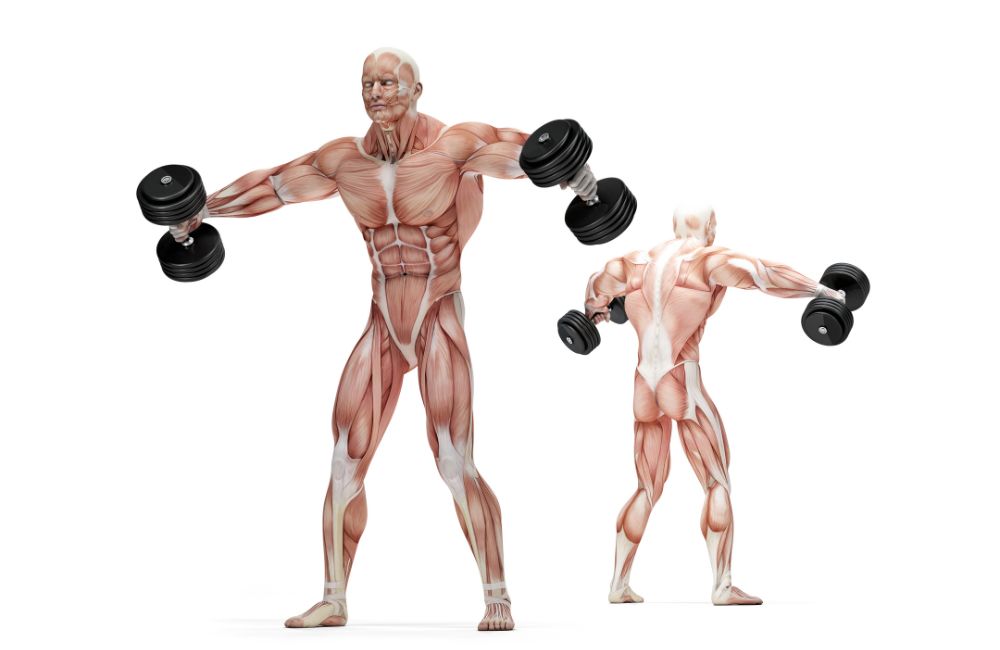
I’ve said it before, but it bears repeating:
There are thousands of different shoulder exercises. This list is certainly not comprehensive, and it won’t be right for everyone. However, most lifters can utilize the exercises listed here to build a solid foundation of shoulder strength.
If you feel like you need help getting started, consider working with an exercise professional!
1. Bar Shoulder Press in Standing
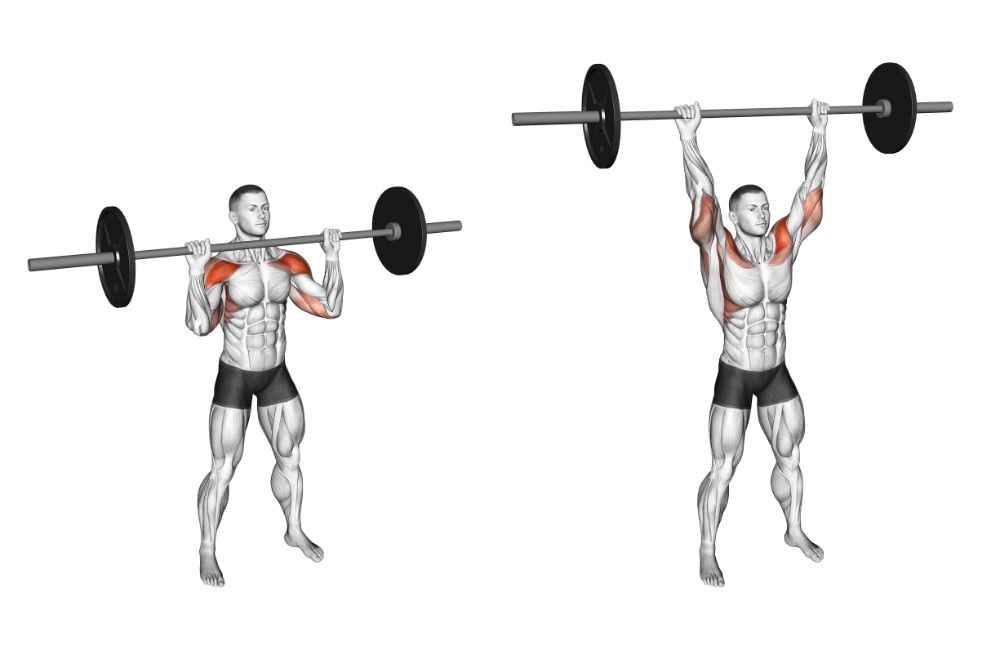
We begin with one of the most basic exercises for the upper body. By simply pressing the bar up over your head, you work tons of muscles throughout the upper body.
As you train, this will be one of your core lifts that you’ll go back to very frequently.
How to Perform:
- Set a reasonable weight on the bar.
- Grasp the bar with your hands spaced apart equally, maintaining a pronated grip.
- Next, rest the bar on your chest, with your knees very slightly bent and your core musculature engaged.
- Press the bar toward the ceiling, then lower it back down to your chest to complete the rep.
- Complete 10-12 reps for 3 sets per session.
2. Arnold Press
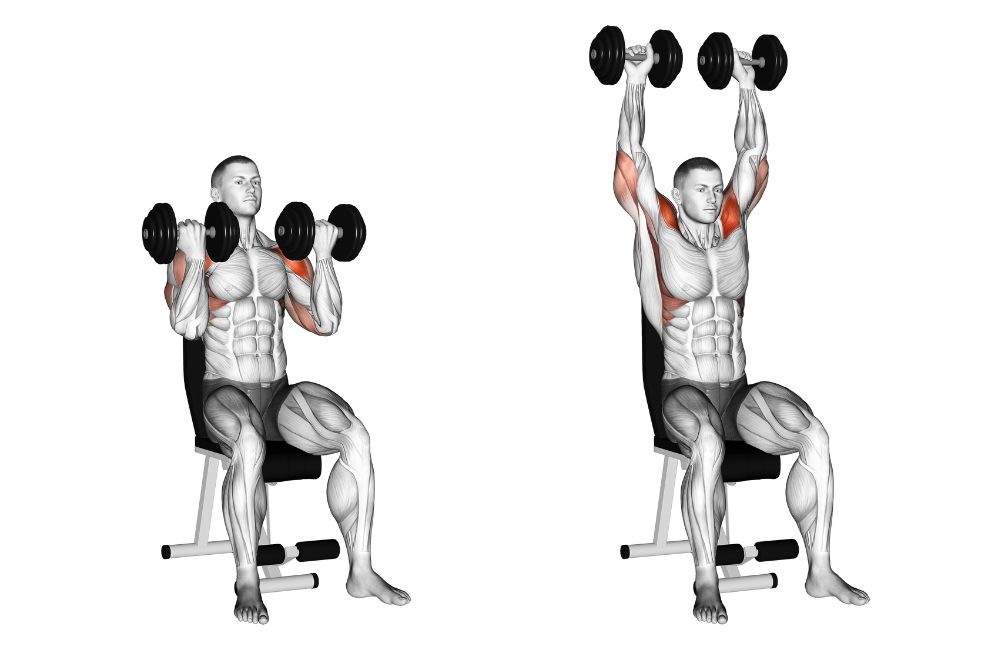
The Arnold press is essentially a seated shoulder press, with one minor variation. However, if the rotational addition inherent in the Arnold press causes you pain, feel free to return to regular seated shoulder presses.
How to Perform:
- Start in sitting, with one dumbbell in each hand.
- With the weights at your shoulders, rotate your arms so that your palms are facing you and the weights are slightly in front of your face.
- Then, rotate your palms out, so that they are facing away from you as you simultaneously press the weights up toward the ceiling.
- Return to the starting position and repeat for 10-12 reps per set, 3 sets per session.
3. Front Shoulder Raises
Front shoulder raises are a terrific choice for multiple reasons. For one thing, you can use just about anything to accomplish the lift such as kettlebells, dumbbells, or even plates.
Also, the exercise gives you an awesome pump in your shoulders.
How to Perform:
- Grasp the weight with both hands.
- Keeping your knees ever-so-slightly bent and your elbows almost completely straight, raise the weight up to shoulder height.
- Slowly return the weight to the starting position to complete the rep.
- Perform 10-12 reps per set, for 3 sets per session.
4. Machine Horizontal Abduction
On most pec deck machines, there is a switch that will allow you to also perform horizontal abduction of the shoulder.
This movement works the rhomboids, traps, and tons of other muscles in the shoulders and back.
How to Perform
- Set the machine according to the manufacturer’s instructions for how to perform reverse flys or horizontal abduction.
- Next, grasp the handles and pull them apart by squeezing your shoulder blades together.
- Complete 10-12 reps per set, for 3 sets per session.
5. Bent-Over Dumbbell Pull Aparts
This exercise is a variation of the “machine horizontal abduction” movement. By performing the same motion in a bent-over position, with dumbbells, you hit more stabilizer muscles.
How to Perform
- In standing, hold one dumbbell in each hand.
- Bend forward at your waist, keeping your back straight and strong.
- Aim to have your trunk parallel to the floor throughout the exercise.
- Pull your hands apart, keeping a very slight bend in your elbows. Try to elevate your arms far enough that they are parallel to the floors at the top of the range.
- Return the weights to the starting position to complete the rep.
- Perform 10-15 reps per set, for 3 sets per session.
6. Standing Lateral Raise with Dumbbells
This is the quintessential exercise for building up the deltoid muscles. It’s simple, yet effective for creating strong, stable shoulders.
How to Perform
- Stand with your feet about hip-width apart, with your knees bent to a very slight angle.
- Slowly raise the dumbbells up and out to the side, keeping your elbows almost completely straight.
- Lower the dumbbells back down to the starting point to complete the rep.
- Complete 12-15 reps per set, for 3 sets per session.
7. Press Ups
Press-ups, also known as push-ups, are an awesome bodyweight move for the upper body. This exercise works the chest, triceps, and of course, the shoulders.
How to Perform
- Place your hands on the ground, directly beneath your shoulders.
- At the same time, place your toes on the ground, spaced about hip-width apart.
- Slowly lower your chest to the ground, keeping your back flat.
- Once you’ve reached that bottom of your range, push yourself back up into the starting position.
- Continue to repeat this alternating motion for 10-20 reps per set, 3 sets per session.
8. Overhead Explosive Push Press
Thus far, we’ve mostly discussed slow, sustained movements to help build strength and endurance. This movement is explosive. It builds power and functional strength.
How to Perform
- Grasp the bar with both hands, resting it on your chest.
- Perform a partial squat, then explode upward, extending the arms up toward the ceiling at the same time.
- Return the weight to the starting position and repeat this pattern 10-12 times per set, for 3 sets per session.
9. Double Lateral Raise with Cables
Earlier, I outlined the dumbbell lateral raise. This is a slight variation in that movement.
The differences are small, but this is a nice way to shake up your usual lateral raises and work your shoulder muscles from a unique angle.
How to Perform
- Stand in the center of the cable system.
- Facing forward, grasp the handle on your right side with your left hand and vice versa.
- Perform a lateral raise, lifting the handles to shoulder height.
- Return to the starting position to complete the rep. Perform 10-12 reps per set, for 3 sets per session.
10. Single Arm Lateral Raise with Pulleys
Single-limb exercises are helpful for identifying and addressing asymmetries and other issues throughout the body.
By focusing on only one shoulder at a time with this exercise, you can make sure you are maintaining equal strength throughout your body.
How to Perform
- Grasp the handle in your left hand, with your right hand supporting your body weight on the cable system.
- Perform a lateral raise, lifting the handle up to shoulder height.
- Return the weight to the starting position to complete the rep.
- Perform 10-15 reps per set, for 3 sets per session.
11. Shoulder Shrugs
Shrugs are one of the best ways to isolate the upper trap muscles. This movement can help you get a nice, thick neck that will give you a great look and functional strength in this region.
How to Perform:
- In standing, grasp the weight (barbell, dumbbells, hex bar, etc) with both hands.
- Next, elevate the shoulders up towards your ears.
- Slowly lower your shoulders back down to the starting position.
- Complete 10-12 reps per set, for 3 sets per session.
12. High Pulley Rows
High pulley rows, also referred to as “face pulls”, are a controversial exercise. Before you perform this exercise with heavier weights, be sure that it doesn’t cause you pain or discomfort.
But for those who can perform this move comfortably, it provides a great way to work with traps, rotator cuff, and other areas of the back and shoulders.
How to Perform:
- Facing the weight stack, with a rope attachment on the pulleys, grasp each end of the rope in both hands.
- Then, pull your hands up toward your ears as you rotate your shoulders. At the end of the movement, your elbows should be below your hands.
- Return to the starting position and complete 10-12 reps per set, for 3 sets per session.
The Bottom Line
The shoulders are a very important part of the body. Keeping them strong and stable takes a lot of work, but it’s worth it.
If you’re looking for a great way to get started on working out your shoulders, this workout may be just what you’re looking for!
Try to perform this workout 2-3 times per week for a month and see how you feel.
Works Cited
- Goetti, P., Denard, P. J., Collin, P., Ibrahim, M., Hoffmeyer, P., & Lädermann, A. (2020). Shoulder biomechanics in normal and selected pathological conditions. EFORT open reviews, 5(8), 508–518. https://doi.org/10.1302/2058-5241.5.200006
- Sambandam, S. N., Khanna, V., Gul, A., & Mounasamy, V. (2015). Rotator cuff tears: An evidence-based approach. World journal of orthopedics, 6(11), 902–918. https://doi.org/10.5312/wjo.v6.i11.902

